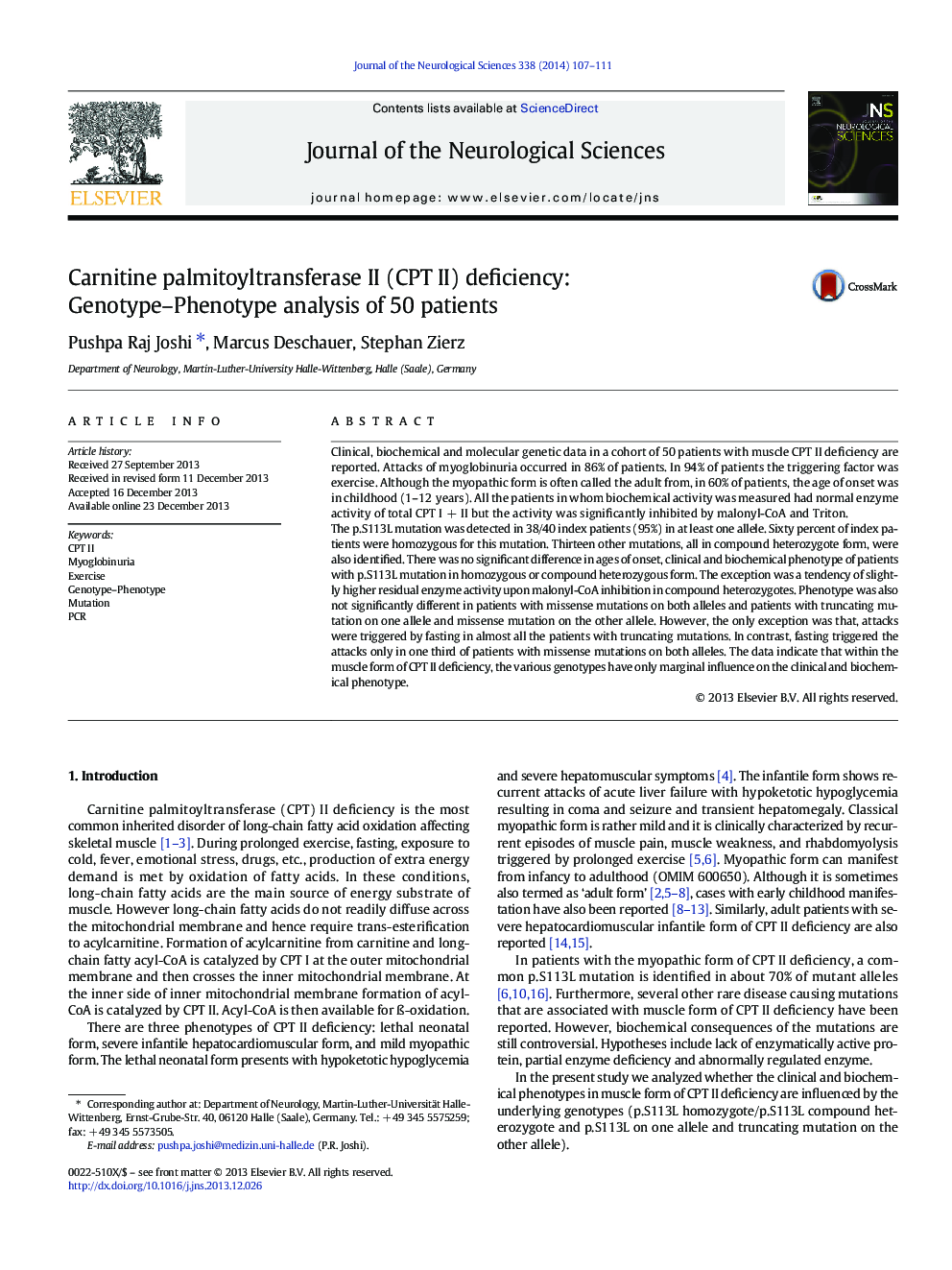| Article ID | Journal | Published Year | Pages | File Type |
|---|---|---|---|---|
| 8277954 | Journal of the Neurological Sciences | 2014 | 5 Pages |
Abstract
The p.S113L mutation was detected in 38/40 index patients (95%) in at least one allele. Sixty percent of index patients were homozygous for this mutation. Thirteen other mutations, all in compound heterozygote form, were also identified. There was no significant difference in ages of onset, clinical and biochemical phenotype of patients with p.S113L mutation in homozygous or compound heterozygous form. The exception was a tendency of slightly higher residual enzyme activity upon malonyl-CoA inhibition in compound heterozygotes. Phenotype was also not significantly different in patients with missense mutations on both alleles and patients with truncating mutation on one allele and missense mutation on the other allele. However, the only exception was that, attacks were triggered by fasting in almost all the patients with truncating mutations. In contrast, fasting triggered the attacks only in one third of patients with missense mutations on both alleles. The data indicate that within the muscle form of CPT II deficiency, the various genotypes have only marginal influence on the clinical and biochemical phenotype.
Related Topics
Life Sciences
Biochemistry, Genetics and Molecular Biology
Ageing
Authors
Pushpa Raj Joshi, Marcus Deschauer, Stephan Zierz,
